
Fri, 2008-12-12 06:28 Houses for sale maryfield artane Advair cheaper alternative
Daya Gamage A?a??a?? Asian Tribune US Bureau presentation
Washington, D.C. 12 November (Asiantribune.com): “An important part of achieving a political solution and reconciliation between all of Sri LankaA?a??a??s communities will be to improve human rights in Sri Lanka. The high numbers of extra-judicial killings, abductions, and other human rights violations in Sri Lanka have disproportionately affected Tamils. A concerted effort to end such practices and bring the culprits to justice would not only hasten reconciliation in Sri Lanka, it would allow countries like the United States to do more in Sri Lanka.”
The American Ambassador in Sri Lanka Robert Blake made the above remarks on December 11 when he addressed the American Chamber of Commerce in Colombo on an issue thatA?a??a??s discussed widely in this Indian-Ocean Island nation A?a??A?US Perspective on the Situation in Sri LankaA?a??A? reiterating that this was the right time for political solution in Sri Lanka.
Earlier this week his political chief in the embassy was awarded the highest distinguish award by Secretary of State Condoleezza Rice in Washington for his superior reporting on Sri LankaA?a??a??s political and human rights situation.
Before any comment from Asian TribuneA?a??a??s U.S. Bureau we carry the full text of American AmbassadorA?a??a??s remarks made before the American Chamber of Commerce.
Full text of remarks by Remarks by Ambassador Blake:
Good afternoonA?a??a??thank you Gordon, and the rest of the AmCham board and members, for welcoming me here today. ItA?a??a??s a pleasure to have the opportunity to address AmCham again and see so many old friends.
All of you represent the best of Sri LankaA?a??a??s business community—companies large and small that cover a range of sectors and collectively employ tens of thousands of Sri Lankans. Beyond being successful businesspeople, you also have something very important to me in common. That is a connection to the United States. All of you do business with my country and help build people to people ties that are so important to our bilateral relations.
IA?a??a??d like to build my remarks today around three themes that go to the heart of U.S. policy toward Sri Lanka. They are:
First, the need for a political solution and improvement in human rights to help end the conflict and achieve national reconciliation;
Second, new directions in U.S. assistance in Sri Lanka; and
Third, how the U.S. and Sri Lanka can weather the current financial turmoil.
With respect to the first question, there are many in Sri Lanka who argue either that there is no need for a political solution in Sri Lanka or that such a solution can await the end of the conflict.
U.S. policy has remained consistent on this important point: we think the right time for a political solution is now. American policy toward Sri Lanka has been dominated for the past twenty-five years by the civil conflict that has plagued and terrorized this nation. From investment to trade to military support to development assistance, the conflict influences nearly each and every aspect of our relationship. And for the past quarter century, the United States has remained committed and actively engaged in supporting an end to the conflict. Our position has remained constant and unwavering: LTTE terrorism cannot be tolerated and the rights of all Sri Lankans can best be protected and promoted through a political solution to Sri LankaA?a??a??s conflict that meets the aspirations of Tamils, Muslims and Sinhalese.
One important way forward is for Sri Lanka to complete the work of the All Parties Representative Committee, which has reached agreement on 90% of a blueprint for constitutional reform that most Sri Lankans believe offers great promise. However, it remains for the countryA?a??a??s two main Sinhalese parties, the SLFP and UNP, to agree on the document, which has proved a significant hurdle thus far.
Pursuing both a political solution and achieving a military victory are not mutually exclusive. In fact, reaching a political solution now could significantly weaken the LTTE in several ways.
It would disprove the LTTEA?a??a??s claim that they are the sole representative of Sri LankaA?a??a??s Tamils and are the only ones who can address and safeguard their interests.
It would diminish support for the LTTE, both within LTTE-controlled areas and among the Tamil Diaspora community abroad.
And it would help reassure the more than 200,000 displaced by the conflict in the Vanni that they can move south where they could aspire to a better future.
An important part of achieving a political solution and reconciliation between all of Sri LankaA?a??a??s communities will be to improve human rights in Sri Lanka. Yesterday was Human Rights Day—the 60th anniversary of the signing of the Universal Declaration of Human Rights. The high number of extra-judicial killings, abductions, and other human rights violations in Sri Lanka has disproportionately affected Tamils. A concerted effort to end such practices and bring the culprits to justice would not only hasten reconciliation in Sri Lanka, it would allow countries like the United States to do more in Sri Lanka.
This leads me to my second policy theme: US aid to Sri Lanka. Over the past half century, the United States has provided more than two billion dollars worth of assistance to the people of Sri Lanka. We have done this for several reasons A?a??a?? to help Sri Lankans increase their economic opportunities and improve their quality of life, and to help ease the hardship caused by this brutal conflict.
One immediate assistance question for the United States is: with the Government liberating large parts of former-LTTE controlled territories, how can my country best support the urgent needs of the people in those areas?
The answer to this question focuses on our development program, led largely by the US Agency for International Development. USAID has undertaken several important initiatives in recent years. First, AID recently concluded the last of its projects aimed to help the Sri Lankan people in the tsunami-affected areas of the south and east to recover from this terrible tragedy. Our $135 million program enabled the reconstruction of the Arugam Bay Bridge, the reconstruction or rehabilitation of nine vocational training schools, the upgrading of three fishing harbors which were damaged by the tsunami, and even the construction of 87-playgrounds to help children recover from the trauma, among many other good activities.
Now, geographically, the focus of our assistance programs has shifted and our development efforts are concentrated in the recently liberated regions of eastern Sri Lanka. Over the next four years, we will focus our development efforts on two programs: A?a??A?Connecting Regional EconomiesA?a??A? or CORE and A?a??A?Supporting Regional GovernanceA?a??A? or SuRG (we Americans love our acronyms!).
The CORE program is designed to increase social and economic security in Eastern Sri Lanka. By addressing the disparity in economic development between Eastern Sri Lanka and the more prosperous Western Province, CORE aims to establish conditions whereby sustained economic development can be launched.
Projects funded under the CORE initiative are designed with five goals:
-First, support livelihood development for vulnerable populations;
-Second, promote the development of agriculture-based value chains;
-Third, ensure that groups in conflict-affected areas benefit from participation in these value chains and our other efforts;
-Fourth, implement a workforce development strategy;
-and finally promote a business enabling environment.
The SuRG program aims to support and facilitate increased citizen engagement in regional and local government, strengthen inter-community reconciliation, and promote social equality by, for example, promoting citizen interaction with government institutions, and strengthening the capacity of journalists and media outlets in the East.
Programs like CORE and SuRG are essential to connecting and integrating the Eastern Province with other provinces. At the end of the day, if the young people of the East, have a job, can care for their families, and have their voices heard by elected representatives, it will reduce the chance the LTTE could ever reconstitute itself in the east and will help to promote economic, social and political stability in the country.
Another important component of the Connecting Regional Economies project of interest to all of you is USAIDA?a??a??s resolve to works with the business community to create public-private partnerships to generate jobs and growth.
This model already has enjoyed success in USAID programs with companies like AmCham Members Hayleys and Brandix. We are actively expanding the scope of our partnerships with private companies to help leverage resources and create sustainable jobs. Such programs are at the core of U.S. official assistance to Sri Lanka. I hope that we will be able to expand such programs to areas of the North such as Mannar once conditions permit.
Before I continue to the next policy question, I want to make another important point about U.S. development assistance. U.S. support to development projects in Sri Lanka is not limited to projects funded by USAID or other U.S. Government agencies. In fact, globally, donations from private individuals in the United States to charities, NGOs, and foundations dwarf official U.S. Government development assistance. To put a number to this, 85 percent of all U.S. A?a??a??originated assistance toward development activities around the world is funded by such private donations.
Here too, in Sri Lanka, you can see just how active International NGOs —the organizations funded largely through such non-governmental sources—are.
Of course, itA?a??a??s not just the work of American INGOs but also a whole host of INGOs from around the world. They are not motivated by profit, they are not here to gain financially from the conflict, and most importantly, they are not here to support terrorists or undermine national security as some have wrongly alleged. They are in Sri Lanka because they are committed to working with the people of Sri Lanka to provide new opportunities and renewed hope for the future, and they are doing an excellent job.
This brings me to third area of U.S. assistance, which is emergency humanitarian aid for those displaced and affected by the conflict. So far this year, the United States has donated $32 million dollars in food and other commodity assistance to help those affected by the fighting in the north. Last week, we donated an additional $100,000 in non-food aid to help victims affected by heavy floods in Jaffna and other parts of the North. In both instances, the Government of Sri Lanka has provided us with assurances that urgent relief supplies can and will move safely and quickly to those who need them most.
Any discussion about development and growth in Sri Lanka is irrevocably tied to a discussion about the global economy. Thus, with markets in turmoil and a global recession casting a shadow over the worldA?a??a??s economy, how can the United States and Sri Lanka weather the current financial crisis?
On Tuesday, I delivered a speech outlining the global response to the financial crisis. In a room full of businesspeople I wonA?a??a??t go into detail about the causes and official actions by the global community. You know all this and deal with it on a daily basis.
But I would like to say a few words, about how the U.S. is weathering the storm because the U.S. economy helps drive global growth and is one of Sri LankaA?a??a??s most important markets. Under President BushA?a??a??s leadership, we have adopted numerous measures to boost the US economy, including the $700 billion Emergency Economic Stabilization Act to purchase distressed assets and provide capital injections into banks. That has helped, but markets remain under stress.
Just about one week ago, the U.S. announced that our economy is officially in a recession. The U.S. Congress is now considering a $14 billion package of loans to AmericaA?a??a??s big three automakersA?a??a??an industry that directly or indirectly employs over six percent of our manufacturing workforce.
President-Elect Obama also has been very active. He announced last weekend that his Administration — once it takes office on January 20 — will undertake the largest public works construction program since our interstate highway program 50 years ago. The program will include infrastructure projects to repair roads and bridges, and create green jobs that reduce energy use and global warming emissions. The President-electA?a??a??s goal is to create 2.5 million new jobs in the first two years of his administration, which would more than offset the number of jobs lost in American in 2008.
Sri Lanka, although not as immediately affected by the crisis as other countries, nonetheless faces economic challenges of its own. Foreign exchange reserves are low, which make it more difficult to maintain trade flows and meet payment obligations. Recent developments in the financial sector are also likely to result in increased difficulties for Sri Lanka in accessing short term trade financing, as well as large commercial loans in 2009. Within both our societies, there is a temptation among some to turn inward. To levy barriers against imports or to “creep away from,” if not outright abandon, international agreements that help facilitate the flow of goods and services would be shortsighted and ill-advised.
Let me conclude my remarks on a positive note. We, Sri Lankans and Americans alike, are faced with tremendous challenges. But both our countries also have the promise of a better future. In Sri Lanka, an end to the conflict could bring unprecedented opportunities and prosperity. In my country, the election of Barack Obama has given us great hope and optimism.
For both of our countries, hope and optimism can translate into peace and economic prosperity. Sri Lanka faces important questions today. What path will lead to a lasting end to the conflict; how can the international community best work with Sri Lanka to foster growth and development; how can our countries avoid the temptation of economic isolationism and work together to overcome the current economic crisis; and perhaps most importantly, how can you overcome terrorism and still protect and promote human rights?
The answers to these questions are not simple, but the United States remains committed to working with Sri Lanka to tackle these enormous challenges.
Barack Obama waged and won his campaign on the message A?a??A?Yes we can.A?a??A? For Americans, this was more than a campaign slogan. The words project optimism, teamwork, and perseverance. This A?a??A?Yes we canA?a??A? attitude doesnA?a??a??t just apply to individuals, but also to partnerships like that between the people of the United States and Sri Lanka. Yes we can address our challenges and Yes we Will continue to work together.
Thank you.
– Asian Tribune –
source:
http://www.asiantribune.com/?q=node/14667
![]()





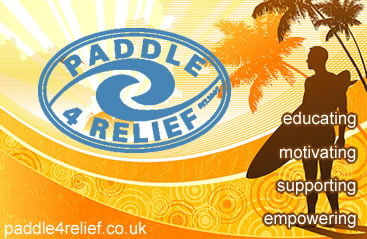
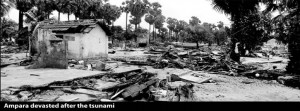




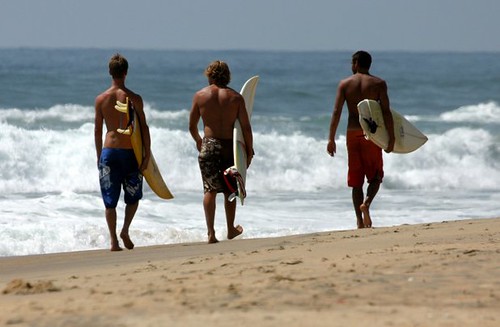 Arugam Bay is situated on the Indian Ocean in the dry zone of Sri Lanka’s South-East coast. The Bay is located 220 km due East of Colombo. It is a popular surfing and tourist destination.
Arugam Bay is situated on the Indian Ocean in the dry zone of Sri Lanka’s South-East coast. The Bay is located 220 km due East of Colombo. It is a popular surfing and tourist destination.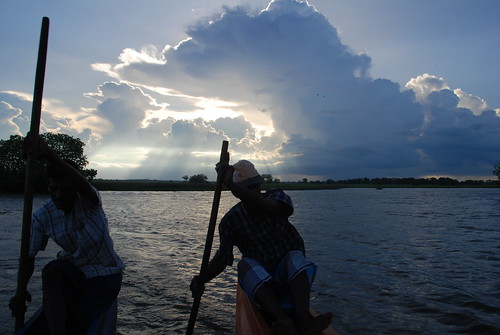 Arugam Bay is far away! 7 hours drive from Colombo, it has until fairly recently only attracted a tthts. There are now almost dayly flights to Ampara with Sri Lankan Airlines sea planes.
Arugam Bay is far away! 7 hours drive from Colombo, it has until fairly recently only attracted a tthts. There are now almost dayly flights to Ampara with Sri Lankan Airlines sea planes.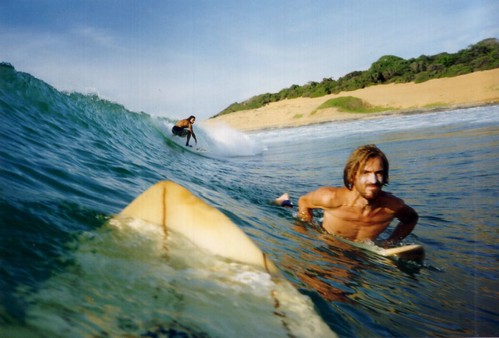 Arugam Bay is on the list of the top ten surf points in the world. Situated on the South East side of Sri Lanka Arugam Bay receives the same Antarctic winter swell’s that hit Indonesia in the in the middle of the year. The best time of the year is between May and November when the predominant wind is offshore for at least the first half of the day.
Arugam Bay is on the list of the top ten surf points in the world. Situated on the South East side of Sri Lanka Arugam Bay receives the same Antarctic winter swell’s that hit Indonesia in the in the middle of the year. The best time of the year is between May and November when the predominant wind is offshore for at least the first half of the day.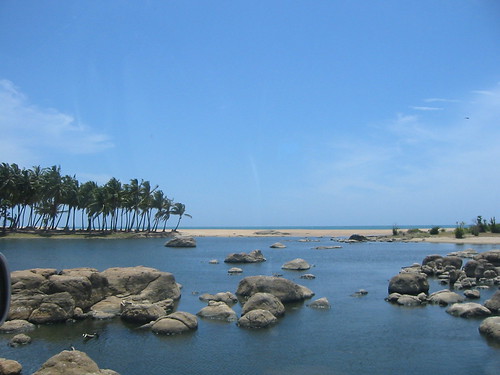 Pottuvil Point: Pottuvil Point is every surfers dream tropical wave. A long deserted sandy beach doted with some huge boulders at the waters edge, make this wave a favourite with some of the season veterans. Less
Pottuvil Point: Pottuvil Point is every surfers dream tropical wave. A long deserted sandy beach doted with some huge boulders at the waters edge, make this wave a favourite with some of the season veterans. Less


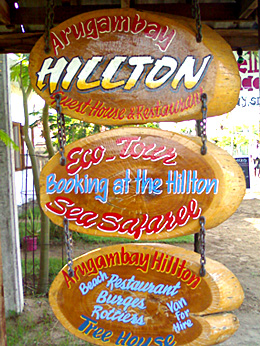












 Arugam Forum
Arugam Forum Arugam Photo Galleries on Picasa
Arugam Photo Galleries on Picasa Old Website
Old Website Press Coverage
Press Coverage Surf Forecast for Arugam Bay
Surf Forecast for Arugam Bay
TODAY’s Comments